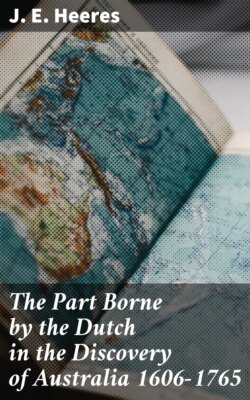Читать книгу The Part Borne by the Dutch in the Discovery of Australia 1606-1765 - J. E. Heeres - Страница 9
На сайте Литреса книга снята с продажи.
CHRONOLOGICAL SURVEY OF THE DUTCH DISCOVERIES ON THE MAINLAND COAST OF AUSTRALIA.
ОглавлениеIf one would distribute over chronological periods the voyages of discovery, both accidental and of set purpose, made by the Netherlanders on the mainland coast of Australia, it might be desirable so to adjust these periods, that each of them was closed by the appearance in this field of discovery and exploration, of ships belonging to other European nations.
The first period, extending from 1595 to 1606, would in that case open with the years 1595–6, when JAN HUYGEN VAN LINSCHOTEN, in his highly remarkable book entitled Itinerario, imparted to his countrymen what he knew about the Far East; and it would conclude with the discovery of Torres Strait by the Spaniards in 1606, a few months after Willem Jansz. in the ship Duifken had discovered the east-coast of the Gulf of Carpentaria, the latter discovery forming the main interest of this period.
The second period may be made to extend from 1606 to 1622, i.e. from the appearance of the Spaniards on the extreme north-coast of the fifth part of the world, to the year in which the English ship Trial was dashed to pieces on a rock to westward of the west-coast of Australia; the discovery of this west-coast by the Dutch in and after 1616, and of the south-western extremity of the continent in 1622, constituting the main facts of the period.
{Page iv}
We next come to the palmiest period of Dutch activity in the discovery of Australia (1622–1688), terminating with the first exploratory voyage of importance undertaken by the English, when in 1688 William Dampier touched at the north-west coast of Australia. This period embraces the very famous, at all events remarkable, voyages of Jan Carstensz (1623), of Pool and Pieterszoon (1636), of Tasman (1642–1644), of Van der Wall (1678), etc.
The last period with which we wish to deal, lies between Dampier's arrival and Cook's first visit to these regions (1688–1769), and is of secondary importance so far as Dutch discoveries are concerned. We may just mention Willem de Vlamingh's voyage of 1696–1697, and Maerten van Delft's of 1705; Gonzal's expedition (1756) is not quite without significance, but the results obtained in these voyages will not bear comparison with those achieved by the expeditions of the preceding period. Besides this, the English navigator Dampier and afterwards Captain Cook now began to inscribe their names on the rolls of history, and those names quite legitimately outshine those of the Dutch navigators of the eighteenth century. The palmy days of Dutch discovery fell in the seventeenth century.
In some such fashion the history of the Dutch wanderings and explorations on the coasts of Australia might be divided into chronological periods. The desire of being clear has, however, led me to adopt another mode of treatment in this Introduction: I shall one after another discuss the different coast-regions discovered and touched at by the Netherlanders.
